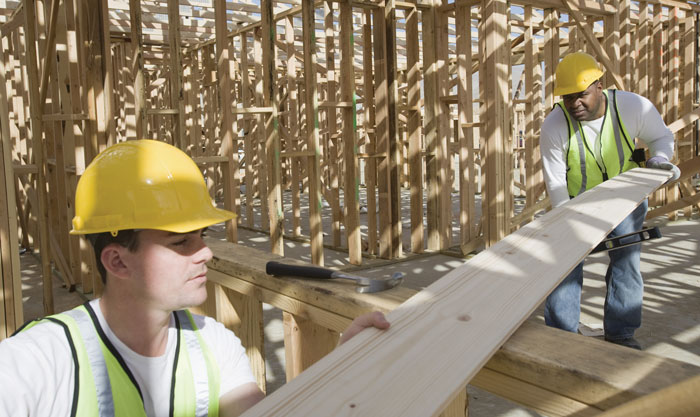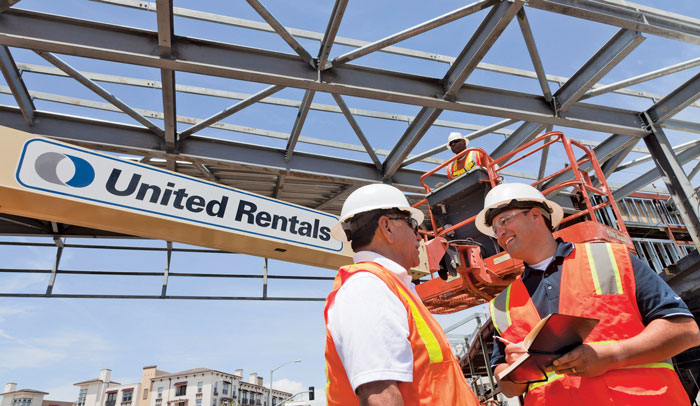Unemployment, Hot Housing Markets and Big Rental Expectations
While the U.S. economy continues to improve gradually, the short-term uncertainty on multiple fronts still can stifle contractors. Slow improvement will continue as unemployment gets better, as housing improves and as equipment rental grows. In fact, those are three markets that appear to be improving, according to the associations below. The slow recovery has meant that some construction markets have recovered faster than others have, and that is going to be the case for the foreseeable future. Despite the uncertainties of the economic growth rate, some long-term positive trends prevail.
 Construction Unemployment Drops to 10.8 Percent, Lowest May Mark in Five Years
Construction Unemployment Drops to 10.8 Percent, Lowest May Mark in Five Years
Construction employment increased by 7,000 in May, helping to push the industry’s unemployment rate down to the lowest May level in five years, according to an analysis of government data by the Associated General Contractors (AGC) of America. Association officials said the relatively positive jobs report for the sector underscores the need to address potential shortages of skilled workers.
“Although the monthly job gain in May was modest, both residential and nonresidential construction have been adding workers at roughly double the rate of the overall economy in the past year,” said Ken Simonson, the association’s chief economist. “At the same time, formerly unemployed construction workers are finding jobs in other sectors, retiring or going back to school. These conditions may lead abruptly to worker shortages in parts of the industry, such as welders and pipefitters.”
Construction employment in May totaled 5,804,000, an increase of 189,000 or 3.4 percent over the past year. Aggregate weekly hours of all new and existing construction employees expanded by 5.2 percent from a year earlier. The unemployment rate for workers who last worked in construction dropped to 10.8 percent from 14.2 percent in May 2012, not seasonally adjusted, and the number of unemployed construction workers shrank over the year by 259,000 to 891,000. The latest numbers were the best May figures for each series since May 2008, Simonson noted.
Employment expanded in both residential and nonresidential construction in May, Simonson observed. Residential building and specialty trade contractors added 5,500 workers for the month and 94,400 (4.6 percent) over 12 months. Nonresidential building, specialty trade and heavy and civil engineering construction firms grew by 1,700 workers in May and 95,500 (3.7 percent) from a year earlier. In a positive indicator for future construction growth, architectural and engineering services employers added 2.1 percent to their workforces over the year.
Association officials said there was still time to avoid some of the future worker shortages that will come if the industry continues to add jobs over the coming months. They urged education officials to rebuild skills-based, or vocational, educational programs designed to help prepare students for careers in construction and manufacturing. For more info, visit www.agc.org.

The number of U.S. housing markets on the mend rose by five to a total of 263 in June, according to the National Association of Home Builders/First American Improving Markets Index (IMI). The list includes entrants from 49 states and the District of Columbia.
The IMI identifies metropolitan areas that have shown improvement from their respective troughs in housing permits, employment and house prices for at least six consecutive months. Twenty-nine new markets were added to the list while 24 others were dropped from it this month. New entrants included such geographically diverse metros as Salinas, Calif.; Sioux City, Iowa; Chicago; Topeka, Kan.; Baton Rouge, La.; Laredo, Texas; and Philadelphia.
“This is the fifth consecutive month in which the IMI has designated more than 70 percent of U.S. metros as improving,” observed NAHB chairman Rick Judson, a home builder from Charlotte, N.C. “While that’s a good sign that the housing recovery is on solid footing, we know that various challenges are slowing its progress — including continuing issues with credit availability for builders and buyers, as well as appraisals that aren’t keeping up with the rising cost of construction.”
“As market conditions improve across most of the country, some metros have moved onto the IMI list while marginal seasonal fluctuations have nudged others off of it,” noted NAHB chief economist David Crowe. “This is to be expected as the recovery expands. Meanwhile, it’s worth noting that the number of improving markets is now more than three times what it was in June 2012.”
A complete list of all 263 metros currently on the IMI, and separate breakouts of metros newly added to or dropped from the list in June, is available at www.nahb.org/imi.
Rental Revenue to Top $38 Billion in 2013
2013 is looking like a great year for equipment rental. The equipment rental industry in the United States is expected to generate $33.6 billion in revenue in 2013, according to the American Rental Association’s (ARA’s) latest forecast from the ARA Rental Market Monitor updated in May. This figure represents a 7.3 percent increase over 2012 with revenue growth reaching 7.9 percent in the fourth quarter, according to the latest quarterly forecast.
In the United States, the construction market and consumer spending are expected to be the most important drivers of growth of the equipment rental market in 2013. “The U.S. equipment rental market is expected to continue its upward trajectory and show significant growth through 2017. Strong growth in real residential construction through 2015 will fuel the construction and industrial equipment segment, which is projected to grow 9.8 percent in 2014 and 11.8 percent in 2015,” according to the U.S. economic analysis from the ARA Rental Market Monitor.
In Canada, the equipment rental industry is forecast to generate nearly $4.6 billion in revenue in 2013, a 3.1 percent increase. In total for North America, equipment rental revenues in 2013 are expected to reach $38.2 billion. By the end of the current five-year forecast in 2017, North American equipment rental revenue is expected to surpass $50 billion to reach $51.6 billion, with U.S. rental revenue at $46.3 billion and rental revenue in Canada at $5.3 billion.
“The industry continues to build customer demand, which drives the growth of the equipment rental industry,” said Christine Wehrman, ARA’s executive vice president and CEO. “Listening to ARA members from around the country and looking at the forecast of IHS Global Insight, there is unlimited potential for the equipment rental industry.”
“Rental has grown during the anemic economic recovery through increased penetration. As industrial and construction markets continue to improve, rental will see further growth from a larger share of the equipment market, leading to double-digit revenue gains by 2014,” said Scott Hazelton, a senior partner with IHS Global insight, which compiles data and analyses it for clients. For more information, visit www.ararental.org.
